“'And Then We Danced' Review: Cinema As Good Citizenship - slantmagazine” plus 2 more |
- 'And Then We Danced' Review: Cinema As Good Citizenship - slantmagazine
- ‘Star Wars: Rise of Skywalker’ Pulls In $135 Million During Extended Box Office Weekend - TheWrap
- Review: The Call of the Wild Provides a Resonant Take on a Classic - slantmagazine
| 'And Then We Danced' Review: Cinema As Good Citizenship - slantmagazine Posted: 04 Feb 2020 12:00 AM PST The classic western was conceived from an undeniably Euro-centric, colonial perspective, with white characters upholding their supposed birthright of freedom and property. In the western, the immense country beyond the Mississippi River figures at once as the sublime object that exceeds the human grasp and as a quantifiable possession. And the prototypical cowboy straddles these paradoxical poles: at home on the dusty, timeless landscape, but also facilitating its incorporation into a society marching toward the Pacific. In 1925's Tumbleweeds, the herder hero played by William S. Hart reluctantly makes way for the newly arrived homesteaders; in 1953's Shane, Alan Ladd's eponymous character rides off after making the West safe for the American family; and in Sergio Leone's 1968 opus Once Upon a Time in the West, Jason Robards's Cheyenne sacrifices his life not to end the expansion of the American empire, but to facilitate a more just one. But this standard narrative mold, to paraphrase John Ford's 1962 classic The Man Who Shot Liberty Valance, only represents the printed legend. The historical American West was more diverse and less male-dominated than the one Hollywood imagined for many years. Life in the Western territories demanded just as many determined women as it did men, and suffragettes had their first major victories in the West: Wyoming was the first state to grant women the vote, and the first to have a woman governor. A third of all cowboys herding cattle on the Great Plains were black—a fact that's only surprising until you consider which groups were most in need of self-reliant vocation and freedom from the long arm of the law in the wake of the Civil War. Every once in a while, these historical realities break through the filtered screen of the Hollywood western: Joan Crawford and Marlene Dietrich play no-nonsense saloon owners in Nicholas Ray's Johnny Guitar and Fritz Lang's Rancho Notorious, respectively, and Sidney Poitier's often overlooked Buck and the Preacher from 1972 is one of the too-few films that are centered around black frontiersmen. When Europeans, influenced by decades of dime novels and Hollywood flicks, got around to making westerns, the resulting films would be part of this swing toward revisionism. By this time, European filmmakers were coping with the aftermath of the most devastating conflict in human history, and Italian westerns like Sergio Corbucci's The Great Silence and Leone's The Good, The Bad, and The Ugly are infused with the lived-in existentialism of postwar Europe. In them, the American West becomes an otherworldly wasteland of pure brutality and diminished—rather than heightened—agency. Europeans' estrangement of western film tropes would help spur a revisionist take on the standards of the genre that infuses films produced to this day. However, for all the observations that such "postmodern" westerns are about the end of the West—in Clint Eastwood's The Outlaw Josey Wales and elsewhere, represented by the arrival of new technologies like the Gatling gun—the western has always been about endings. It's no coincidence that the genre's proverbial image is that of a figure "riding off into the sunset." The American frontier was declared closed after the 1890 census, a decade before the first western on our list (Edwin S. Porter's The Great Train Robbery) was produced. Right-wing New Hollywood directors like Sam Peckinpah, Don Siegel, and Eastwood have tended to identify this perpetual fading of the West with the decline of a virile and violent, but honorable masculinity. The bloodbaths that end films like Peckinpah's The Wild Bunch arguably represent what Freud would have called "screen memories," a compromise between repressed memory and images we've invented to defend ourselves against terrible truths. The true bloodbaths in the West were the military campaigns against Native Americans, genocidal conflicts that many big-budget westerns keep on the margins, with natives appearing as stereotypical noble savages or town drunks. Ford's films, as often as they rely on racist characterizations, were often the prestige westerns to look most directly at these wars: The Searchers and Fort Apache explore, in their own flawed fashion, the morally degrading racism in their main characters' hearts. Some decades later, Kevin Costner's Dances with Wolves became the paradigm of a post-'70s cultural sea change: When it comes to "cowboys versus Indians," the cowboys are no longer the automatic locus of our sympathy. Today, infusing familiar iconography with new meaning, such revisionist representations of the American West have helped to explode the boundaries of the genre, allowing filmmakers as well as critics to explore cinematic tropes about life on the frontier in non-conventional western narratives. In contemporary films like Ang Lee's Brokeback Mountain and Chloé Zhao's The Rider—and looking back to ones like Victor Sjöström's The Wind and John Huston's The Misfits—we can recognize something like a western mode, a broader and more expansive cinematic language that has been suffused by the symbols of the American West. The western has proved itself a durable and influential way of talking about the human condition—one that needs not be confined within the frontiers drawn by the Euro-American colonial imagination. Pat Brown
100. Drums Along the Mohawk (John Ford, 1939)If John Ford was, per Jonathan Lethem, "a poet in black and white," he became a sharp impressionist in color. The finely calibrated stillness of his shots, occasionally ravished by the greens, reds, and blues of the colonial wardrobe, gives Drums Along the Mohawk a painterly quality, as if Ford had animated a William Ranney portrait. Each frame radiates rugged beauty, but this doesn't soften the filmmaker's no-bull directness when depicting the eruptive landscape of the Revolutionary War. Frontier man Gil (Henry Fonda) and his new wife, Lana Martin (Claudette Colbert), are without a home of their own for most of the film, their first cabin being burned to the ground during an attack, and when Gil and the troops return from the bloody Battle of Oriskany, the director details their immense casualties and injuries with unsparing detail. Chris Cabin
99. Tombstone (George P. Cosmatos, 1993)Tombstone succeeds by re-appropriating the stylistic quirks of many a great western before it, from "the long walk" of Sam Peckinpah's The Wild Bunch to the candlelit saloons of Robert Altman's McCabe & Mrs Miller, spitting them out in a spectacle of pure pop pastiche. It tells much the same story as John Ford's My Darling Clementine, but it reinterprets that film's mythical, elegiac sense of wonder through bombastic action and performances. There probably isn't a western as quotable as this one, which also succeeds through its rogues' gallery of memorable character actors and firecracker script. A drunken Doc Holliday (Val Kilmer), when accused of seeing double, says, "I have two guns, one for each of you." Wyatt Earp (Kurt Russell), as he pistol-whips Johnny Tyler (Billy Bob Thornton), belts out, "You gonna do something? Or are you just gonna stand there and bleed?" The lines between good and evil blur as the law switches sides to fit the plot. Cliché layers over cliché, exposing what the genre is all about: the foundations of American myth, told again and again to suit each generation. The '90s was the remix era and Tombstone fits it perfectly. Ben Flanagan
98. True Grit (Henry Hathaway, 1969)The Duke casts a large shadow in any instance, but especially here. Rooster Cogburn is one of John Wayne's most identifiable roles, not just because he won an Oscar for it, or because his True Grit is popular, or because he played the character twice (the second time in 1975's Rooster Cogburn), but mostly because Rooster's personality is so intertwined with Wayne's iconic persona. Wayne's detractors often note that Wayne lacked range, and that, given his consistent trademark drawl, about the only way to distinguish one Wayne character from another is by observing his costume. But while that's roughly accurate, it doesn't mean that every character Wayne ever played had a similar effect. His Rooster is one of those special roles that seemed indelibly Wayne's—because he wore that eye patch so well, because his inherent presence and stature made him a natural to play the "meanest" marshal around, because his inner softness allowed the bond between Rooster and Mattie (Kim Darby) to feel convincing and because Wayne was born to be the cowboy who puts the reins in his teeth and rides toward four armed men with a gun in each hand. Jason Bellamy
97. Death Rides a Horse (Giulio Petroni, 1967)In 1967's boldly cinematic Death Rides a Horse, Giulio Petroni fixates on the inextricable link between a man's memory and his thirst for vengeance. In the 15 years since watching his entire family get murdered by bloodthirsty bandits, Bill (John Phillip Law) has carried with him a single physical relic of this trauma: a lone spur. His memories, meanwhile, are filled with haunting and vivid reminders of that moment when his life changed forever, but also with specific visual cues related to each of the bandits: a silver earring, a chest tattoo of playing cards, a skull necklace. Bill's overwhelmingly obsessive quest for revenge takes on an extra layer of perverseness once he's paired up with the mysterious Ryan (Lee Van Cleef), an older man who playfully competes with Bill to hunt down and kill these same men first. Through an array of carefully crafted visual and aural motifs, and clever, judiciously employed narrative twists, Petroni weaves together these two crusades, building to an explosive finale that delivers equally cathartic doses of redemption and rage. Derek Smith
96. The Violent Men (Rudolph Maté, 1955)Polish-born filmmaker Rudolph Maté worked for a little over a decade as a cinematographer in Hollywood before starting to crank out potboilers as a director in the late '40s, many of them marked by a distinct pictorial flair. He was a mainstay by the mid-'50s, and The Violent Men counts among his most ravishingly shot films, and indeed one of the unheralded Technicolor westerns of the golden era. The central California frontier, where the majestic flatland meets the imposing Sierras, has rarely been more reverently photographed, and a single montage of Glenn Ford's John Parrish galloping from one range to another as Max Steiner's strings howl on the soundtrack is stirring enough to validate the invention of CinemaScope. Fittingly, the land itself provides the conflict here, with Ford's Union veteran-cum-landowner trotting out his old fighting spirit when the vicious owners of a neighboring estate—Barbara Stanwyck and Edward G. Robinson in wonderfully belligerent performances—try to exploit his ranch for pennies. A cathartic war against greed ensues, and the result is finely wrought big-screen entertainment. Carson Lund
95. Westward the Women (William A. Wellman, 1951)Based on a story by Frank Capra, William Wellman's Westward the Women shares the collective triumphalism of Capra's greatest films but salts it with the grueling hardship and random cruelty that are hallmarks of Wellman's storytelling. The premise is ludicrous on paper: A large farm in a California valley is suffering a shortage of the fairer sex, so it sends a wagon train headed by Robert Taylor to Chicago to haul back 150 brides for the workers—no short order in the middle of the 19th century. Several treacherous landscapes, bleakly depicted deaths, and a mid-film memorial service later, the plan is fulfilled in grandly hokey fashion, though not without a striking reordering of business-as-usual sexual politics. As the women prove as resilient, if not more so, than the men, ideals of male heroism fall by the cliffside (literally) and members of the ensemble who would normally be relegated to extras emerge as fully shaded and complex heroines. As a result, the film amounts to a portrait of hard-won joy that's nearly spiritual in its belief in the power of cooperation. Lund
94. The Gold Rush (Charles Chaplin, 1925)What's surprising when one takes a fresh look at The Gold Rush is how serious it is about depicting the hard life of prospectors. The comic soul of the film is, in fact, quite black, even if Charlie Chaplin exploits every opportunity (beautifully) to transform the environment into a vaudeville stage. Lonely as the wastes are, the town in the film is sinister and lurid, full of sex and violence, despite the fact that Chaplin always seems to find a way to invest in it the personality and tone of his early one-reelers. He makes the town funny but retains its barbarism. Chaplin pursues deliverance not in the miracle of hitting pay dirt, but in the promise of a woman, and it's this promise that Chaplin would keep after, well into his sync-sound period. Around the film's midpoint comes a sequence that cuts between the townsfolk singing "Auld Lange Syne," and the Tramp, alone in his cabin, listening, longingly. It's as perfect a moment as any other in the great silent period. Some accuse the director of succumbing to sentimentality, but he's never less sublime than when he reaches for ridiculous, grandiose highs in romance, coincidence, and naked emotion. Jaime N. Christley
93. Destry Rides Again (George Marshall, 1939)Destry Rides Again's Bottleneck is essentially the same town as the one in "Drip-Along Daffy." The opening crane shots of Bottleneck show the standard storefronts that western audiences are accustomed to seeing: feed and general stores, the jail, the Saloon. As the camera moves along the street, we see just about every possible vice happening all at once with bullets whizzing about the crowded streets—and all the while, Frank Skinner's intense score adds to the feeling of utter lawlessness. Every stereotype of the wild western town is represented in George Marshall's film: crooked gambling above the saloon, land-hungry town bosses, a hot dancing girl named Frenchy who can douse the fires of her rowdy fans with a shot of whisky, and killin'. Lots of killin'. Back when the western was really coming into its own in 1939, the genre had already been around long enough to warrant this satire. Bottleneck is a parody of the western town. Jeffrey Hill
92. The Wind (Victor Sjöström, 1927)So many late silent films are infused with a delirious energy, a sheer delight in the transportive powers of the cinema, and Sweden's original film genius, Victor Sjöström, was renowned as a master of subjective, otherworldly moving images. With the hallucinatory The Wind, he delivered his most captivating visual play of subjective and objective realities, casting Dorothy Gish as an East Coast virgin who's tormented on an ineffable psychical (and ambiguously erotic) level by the overbearing winds of the Great Plains. After circumstances force her into an unwanted marriage, she's left alone in the small cottage she shares with her unloved husband as the personified wind blows open doors, whips up dust, and…takes the shape of giant stark-white colts who buck across the open sky. In a career-defining role, Gish grounds the film, giving a performance that humanizes the sensational and sensual inner conflict of a woman left alone in a vast, empty wilderness. Brown
91. Run of the Arrow (Samuel Fuller, 1957)Writer-director Samuel Fuller's Run of the Arrow stars Rod Steiger as Private O'Meara, a disaffected Confederate soldier who lights out for the western territories, only to wind up living among (and ultimately adopting the ways of) a Native American tribe. Fuller's typically two-fisted tale essentially prefigures Kevin Costner's Dances with Wolves, absent all the bombast and self-aggrandizement. Granted, the film succumbs to the longstanding Hollywood tradition of utilizing a motley crew of decidedly non-native actors in pigment-darkening makeup to portray its Sioux tribe, including a young Charles Bronson and Spanish actress Sara Montiel, but it also endows these characters with a degree of respect and agency practically unprecedented in a 1950s American western. As the film comes full circle with the return of the man O'Meara shot and then saved in the opening scene, Fuller's story reveals itself as a morality play concerning the destructive nature of hatred and bigotry, as well as a touchingly earnest plea for tolerance. Budd Wilkins |
| ‘Star Wars: Rise of Skywalker’ Pulls In $135 Million During Extended Box Office Weekend - TheWrap Posted: 29 Dec 2019 12:00 AM PST Lucasfilm's "Star Wars: The Rise of Skywalker" is completing the extended Christmas box office period with an estimated 5-day total of $135 million, bringing its 10-day domestic total to $361.8 million. After the Skywalker Saga finale earned $32 million on Christmas Day, some industry estimates were projecting that J.J. Abrams' film could pull ahead of the domestic pace of its predecessor, "Star Wars: The Last Jedi," despite having a significantly lower opening weekend. But as the weekend progressed, those estimates were quickly dialed down. "Last Jedi" had a 10-day total of $368 million, and that was before a Christmas Day surge that saw the film's domestic total rise to $464 million after a full two weeks in theaters. Still, "Rise of Skywalker" took in $72 million for its Friday-to-Sunday second weekend, a 59% drop from its $177 million opening that is consistent with other blockbusters that have opened at that level. Globally, the film now has a total of $725 million with domestic market share still nearly even with an overseas total of $363 million. Also Read: Billie Lourd Pays Tribute to Mom Carrie Fisher on 3-Year Anniversary of Her Death (Video) Taking second is Sony's "Jumanji: The Next Level," which is proving to be a strong alternative to "Star Wars" as its distributor had hoped. With a $35.3 million 3-day/$59 million 5-day weekend, the "Jumanji" sequel now has a domestic total of $175 million. Adding to Sony's big Christmas is the success of Columbia/Regency's "Little Women," which opened on Christmas Day on 3,308 screens and took the No. 4 spot on the charts with a $29 million 5-day opening. That beats industry projections for an opening in the low $20 million range and puts Greta Gerwig's likely Best Picture Oscar contender in strong position to leg out to a domestic total of over $100 million. Word of mouth has been incredibly strong with an A- on CinemaScore and critics and audiences scores on Rotten Tomatoes of over 90%. Also opening this weekend and taking the No. 5 spot is Disney/Fox's "Spies in Disguise," which came in slightly below industry projections with a $22 million 5-day opening from 3,502 screens and a $38 million global opening. Reception has been strong for the Blue Sky/Chernin-produced animated film with an A- on CinemaScore and 72% Rotten Tomatoes critics score. However, "Spies" is facing competition for families from "Jumanji" and the still surging "Frozen II," which took in $26 million over the 5-day period to take third on the box office charts. "Frozen II" has now passed the domestic run of the original "Frozen" with $421 million and is $57 million away from passing the global total with $1.21 billion grossed after six weekends. The final big Christmas release of the weekend was "Uncut Gems," which is setting new records for distributor A24. After providing their studio with a record $105,000 per screen average in its limited opening, the Safdie Brothers crime thriller has earned an $18.8 million 5-day wide opening from 2,348 screens. The film has a total of $20 million and is now expected to become A24's highest ever domestic grosser, passing the $48.9 million earned by "Lady Bird" in 2017. Among holdovers, Lionsgate had some mixed results with their two current releases, "Knives Out" and "Bombshell." "Knives Out" is showing strong legs in its fifth weekend, earning $16.6 million over the extended weekend to bring its total to $110 million. "Knives Out" now joins "John Wick: Chapter 3" as Lionsgate's second $100 million-plus release in 2019 after not having any for the entirety of 2018. The Rian Johnson mystery has also crossed $200 million worldwide thanks to strong performance in China ($27.9 million) and the U.K. ($13.7 million). Also Read: 'Knives Out' Director Rian Johnson and Stars on Chris Evans' Viral 'Eat S-' Moment| Video "Bombshell," meanwhile, is having a rougher time this weekend thanks mainly to stronger than expected competition from "Little Women" for female moviegoers. The film took in $8.4 million over the 5-day weekend, giving the $32 million production a domestic total of $15.6 million after two weekends. The film still has a chance to leg out in January, especially if stars Charlize Theron and Margot Robbie earn victories at the Golden Globes and help fuel interest. But that's nothing compared to the struggles facing Universal's "Cats," which was removed from the studio's FYC page earlier this weekend and is set to bomb with $17.8 million domestic and $38.2 million worldwide after two weekends against a $95 million budget before marketing costs. |
| Review: The Call of the Wild Provides a Resonant Take on a Classic - slantmagazine Posted: 17 Feb 2020 12:00 AM PST The classic western was conceived from an undeniably Euro-centric, colonial perspective, with white characters upholding their supposed birthright of freedom and property. In the western, the immense country beyond the Mississippi River figures at once as the sublime object that exceeds the human grasp and as a quantifiable possession. And the prototypical cowboy straddles these paradoxical poles: at home on the dusty, timeless landscape, but also facilitating its incorporation into a society marching toward the Pacific. In 1925's Tumbleweeds, the herder hero played by William S. Hart reluctantly makes way for the newly arrived homesteaders; in 1953's Shane, Alan Ladd's eponymous character rides off after making the West safe for the American family; and in Sergio Leone's 1968 opus Once Upon a Time in the West, Jason Robards's Cheyenne sacrifices his life not to end the expansion of the American empire, but to facilitate a more just one. But this standard narrative mold, to paraphrase John Ford's 1962 classic The Man Who Shot Liberty Valance, only represents the printed legend. The historical American West was more diverse and less male-dominated than the one Hollywood imagined for many years. Life in the Western territories demanded just as many determined women as it did men, and suffragettes had their first major victories in the West: Wyoming was the first state to grant women the vote, and the first to have a woman governor. A third of all cowboys herding cattle on the Great Plains were black—a fact that's only surprising until you consider which groups were most in need of self-reliant vocation and freedom from the long arm of the law in the wake of the Civil War. Every once in a while, these historical realities break through the filtered screen of the Hollywood western: Joan Crawford and Marlene Dietrich play no-nonsense saloon owners in Nicholas Ray's Johnny Guitar and Fritz Lang's Rancho Notorious, respectively, and Sidney Poitier's often overlooked Buck and the Preacher from 1972 is one of the too-few films that are centered around black frontiersmen. When Europeans, influenced by decades of dime novels and Hollywood flicks, got around to making westerns, the resulting films would be part of this swing toward revisionism. By this time, European filmmakers were coping with the aftermath of the most devastating conflict in human history, and Italian westerns like Sergio Corbucci's The Great Silence and Leone's The Good, The Bad, and The Ugly are infused with the lived-in existentialism of postwar Europe. In them, the American West becomes an otherworldly wasteland of pure brutality and diminished—rather than heightened—agency. Europeans' estrangement of western film tropes would help spur a revisionist take on the standards of the genre that infuses films produced to this day. However, for all the observations that such "postmodern" westerns are about the end of the West—in Clint Eastwood's The Outlaw Josey Wales and elsewhere, represented by the arrival of new technologies like the Gatling gun—the western has always been about endings. It's no coincidence that the genre's proverbial image is that of a figure "riding off into the sunset." The American frontier was declared closed after the 1890 census, a decade before the first western on our list (Edwin S. Porter's The Great Train Robbery) was produced. Right-wing New Hollywood directors like Sam Peckinpah, Don Siegel, and Eastwood have tended to identify this perpetual fading of the West with the decline of a virile and violent, but honorable masculinity. The bloodbaths that end films like Peckinpah's The Wild Bunch arguably represent what Freud would have called "screen memories," a compromise between repressed memory and images we've invented to defend ourselves against terrible truths. The true bloodbaths in the West were the military campaigns against Native Americans, genocidal conflicts that many big-budget westerns keep on the margins, with natives appearing as stereotypical noble savages or town drunks. Ford's films, as often as they rely on racist characterizations, were often the prestige westerns to look most directly at these wars: The Searchers and Fort Apache explore, in their own flawed fashion, the morally degrading racism in their main characters' hearts. Some decades later, Kevin Costner's Dances with Wolves became the paradigm of a post-'70s cultural sea change: When it comes to "cowboys versus Indians," the cowboys are no longer the automatic locus of our sympathy. Today, infusing familiar iconography with new meaning, such revisionist representations of the American West have helped to explode the boundaries of the genre, allowing filmmakers as well as critics to explore cinematic tropes about life on the frontier in non-conventional western narratives. In contemporary films like Ang Lee's Brokeback Mountain and Chloé Zhao's The Rider—and looking back to ones like Victor Sjöström's The Wind and John Huston's The Misfits—we can recognize something like a western mode, a broader and more expansive cinematic language that has been suffused by the symbols of the American West. The western has proved itself a durable and influential way of talking about the human condition—one that needs not be confined within the frontiers drawn by the Euro-American colonial imagination. Pat Brown
100. Drums Along the Mohawk (John Ford, 1939)If John Ford was, per Jonathan Lethem, "a poet in black and white," he became a sharp impressionist in color. The finely calibrated stillness of his shots, occasionally ravished by the greens, reds, and blues of the colonial wardrobe, gives Drums Along the Mohawk a painterly quality, as if Ford had animated a William Ranney portrait. Each frame radiates rugged beauty, but this doesn't soften the filmmaker's no-bull directness when depicting the eruptive landscape of the Revolutionary War. Frontier man Gil (Henry Fonda) and his new wife, Lana Martin (Claudette Colbert), are without a home of their own for most of the film, their first cabin being burned to the ground during an attack, and when Gil and the troops return from the bloody Battle of Oriskany, the director details their immense casualties and injuries with unsparing detail. Chris Cabin
99. Tombstone (George P. Cosmatos, 1993)Tombstone succeeds by re-appropriating the stylistic quirks of many a great western before it, from "the long walk" of Sam Peckinpah's The Wild Bunch to the candlelit saloons of Robert Altman's McCabe & Mrs Miller, spitting them out in a spectacle of pure pop pastiche. It tells much the same story as John Ford's My Darling Clementine, but it reinterprets that film's mythical, elegiac sense of wonder through bombastic action and performances. There probably isn't a western as quotable as this one, which also succeeds through its rogues' gallery of memorable character actors and firecracker script. A drunken Doc Holliday (Val Kilmer), when accused of seeing double, says, "I have two guns, one for each of you." Wyatt Earp (Kurt Russell), as he pistol-whips Johnny Tyler (Billy Bob Thornton), belts out, "You gonna do something? Or are you just gonna stand there and bleed?" The lines between good and evil blur as the law switches sides to fit the plot. Cliché layers over cliché, exposing what the genre is all about: the foundations of American myth, told again and again to suit each generation. The '90s was the remix era and Tombstone fits it perfectly. Ben Flanagan
98. True Grit (Henry Hathaway, 1969)The Duke casts a large shadow in any instance, but especially here. Rooster Cogburn is one of John Wayne's most identifiable roles, not just because he won an Oscar for it, or because his True Grit is popular, or because he played the character twice (the second time in 1975's Rooster Cogburn), but mostly because Rooster's personality is so intertwined with Wayne's iconic persona. Wayne's detractors often note that Wayne lacked range, and that, given his consistent trademark drawl, about the only way to distinguish one Wayne character from another is by observing his costume. But while that's roughly accurate, it doesn't mean that every character Wayne ever played had a similar effect. His Rooster is one of those special roles that seemed indelibly Wayne's—because he wore that eye patch so well, because his inherent presence and stature made him a natural to play the "meanest" marshal around, because his inner softness allowed the bond between Rooster and Mattie (Kim Darby) to feel convincing and because Wayne was born to be the cowboy who puts the reins in his teeth and rides toward four armed men with a gun in each hand. Jason Bellamy
97. Death Rides a Horse (Giulio Petroni, 1967)In 1967's boldly cinematic Death Rides a Horse, Giulio Petroni fixates on the inextricable link between a man's memory and his thirst for vengeance. In the 15 years since watching his entire family get murdered by bloodthirsty bandits, Bill (John Phillip Law) has carried with him a single physical relic of this trauma: a lone spur. His memories, meanwhile, are filled with haunting and vivid reminders of that moment when his life changed forever, but also with specific visual cues related to each of the bandits: a silver earring, a chest tattoo of playing cards, a skull necklace. Bill's overwhelmingly obsessive quest for revenge takes on an extra layer of perverseness once he's paired up with the mysterious Ryan (Lee Van Cleef), an older man who playfully competes with Bill to hunt down and kill these same men first. Through an array of carefully crafted visual and aural motifs, and clever, judiciously employed narrative twists, Petroni weaves together these two crusades, building to an explosive finale that delivers equally cathartic doses of redemption and rage. Derek Smith
96. The Violent Men (Rudolph Maté, 1955)Polish-born filmmaker Rudolph Maté worked for a little over a decade as a cinematographer in Hollywood before starting to crank out potboilers as a director in the late '40s, many of them marked by a distinct pictorial flair. He was a mainstay by the mid-'50s, and The Violent Men counts among his most ravishingly shot films, and indeed one of the unheralded Technicolor westerns of the golden era. The central California frontier, where the majestic flatland meets the imposing Sierras, has rarely been more reverently photographed, and a single montage of Glenn Ford's John Parrish galloping from one range to another as Max Steiner's strings howl on the soundtrack is stirring enough to validate the invention of CinemaScope. Fittingly, the land itself provides the conflict here, with Ford's Union veteran-cum-landowner trotting out his old fighting spirit when the vicious owners of a neighboring estate—Barbara Stanwyck and Edward G. Robinson in wonderfully belligerent performances—try to exploit his ranch for pennies. A cathartic war against greed ensues, and the result is finely wrought big-screen entertainment. Carson Lund
95. Westward the Women (William A. Wellman, 1951)Based on a story by Frank Capra, William Wellman's Westward the Women shares the collective triumphalism of Capra's greatest films but salts it with the grueling hardship and random cruelty that are hallmarks of Wellman's storytelling. The premise is ludicrous on paper: A large farm in a California valley is suffering a shortage of the fairer sex, so it sends a wagon train headed by Robert Taylor to Chicago to haul back 150 brides for the workers—no short order in the middle of the 19th century. Several treacherous landscapes, bleakly depicted deaths, and a mid-film memorial service later, the plan is fulfilled in grandly hokey fashion, though not without a striking reordering of business-as-usual sexual politics. As the women prove as resilient, if not more so, than the men, ideals of male heroism fall by the cliffside (literally) and members of the ensemble who would normally be relegated to extras emerge as fully shaded and complex heroines. As a result, the film amounts to a portrait of hard-won joy that's nearly spiritual in its belief in the power of cooperation. Lund
94. The Gold Rush (Charles Chaplin, 1925)What's surprising when one takes a fresh look at The Gold Rush is how serious it is about depicting the hard life of prospectors. The comic soul of the film is, in fact, quite black, even if Charlie Chaplin exploits every opportunity (beautifully) to transform the environment into a vaudeville stage. Lonely as the wastes are, the town in the film is sinister and lurid, full of sex and violence, despite the fact that Chaplin always seems to find a way to invest in it the personality and tone of his early one-reelers. He makes the town funny but retains its barbarism. Chaplin pursues deliverance not in the miracle of hitting pay dirt, but in the promise of a woman, and it's this promise that Chaplin would keep after, well into his sync-sound period. Around the film's midpoint comes a sequence that cuts between the townsfolk singing "Auld Lange Syne," and the Tramp, alone in his cabin, listening, longingly. It's as perfect a moment as any other in the great silent period. Some accuse the director of succumbing to sentimentality, but he's never less sublime than when he reaches for ridiculous, grandiose highs in romance, coincidence, and naked emotion. Jaime N. Christley
93. Destry Rides Again (George Marshall, 1939)Destry Rides Again's Bottleneck is essentially the same town as the one in "Drip-Along Daffy." The opening crane shots of Bottleneck show the standard storefronts that western audiences are accustomed to seeing: feed and general stores, the jail, the Saloon. As the camera moves along the street, we see just about every possible vice happening all at once with bullets whizzing about the crowded streets—and all the while, Frank Skinner's intense score adds to the feeling of utter lawlessness. Every stereotype of the wild western town is represented in George Marshall's film: crooked gambling above the saloon, land-hungry town bosses, a hot dancing girl named Frenchy who can douse the fires of her rowdy fans with a shot of whisky, and killin'. Lots of killin'. Back when the western was really coming into its own in 1939, the genre had already been around long enough to warrant this satire. Bottleneck is a parody of the western town. Jeffrey Hill
92. The Wind (Victor Sjöström, 1927)So many late silent films are infused with a delirious energy, a sheer delight in the transportive powers of the cinema, and Sweden's original film genius, Victor Sjöström, was renowned as a master of subjective, otherworldly moving images. With the hallucinatory The Wind, he delivered his most captivating visual play of subjective and objective realities, casting Dorothy Gish as an East Coast virgin who's tormented on an ineffable psychical (and ambiguously erotic) level by the overbearing winds of the Great Plains. After circumstances force her into an unwanted marriage, she's left alone in the small cottage she shares with her unloved husband as the personified wind blows open doors, whips up dust, and…takes the shape of giant stark-white colts who buck across the open sky. In a career-defining role, Gish grounds the film, giving a performance that humanizes the sensational and sensual inner conflict of a woman left alone in a vast, empty wilderness. Brown
91. Run of the Arrow (Samuel Fuller, 1957)Writer-director Samuel Fuller's Run of the Arrow stars Rod Steiger as Private O'Meara, a disaffected Confederate soldier who lights out for the western territories, only to wind up living among (and ultimately adopting the ways of) a Native American tribe. Fuller's typically two-fisted tale essentially prefigures Kevin Costner's Dances with Wolves, absent all the bombast and self-aggrandizement. Granted, the film succumbs to the longstanding Hollywood tradition of utilizing a motley crew of decidedly non-native actors in pigment-darkening makeup to portray its Sioux tribe, including a young Charles Bronson and Spanish actress Sara Montiel, but it also endows these characters with a degree of respect and agency practically unprecedented in a 1950s American western. As the film comes full circle with the return of the man O'Meara shot and then saved in the opening scene, Fuller's story reveals itself as a morality play concerning the destructive nature of hatred and bigotry, as well as a touchingly earnest plea for tolerance. Budd Wilkins |
| You are subscribed to email updates from "citizen perpetual a t,gold drop earrings" - Google News. To stop receiving these emails, you may unsubscribe now. | Email delivery powered by Google |
| Google, 1600 Amphitheatre Parkway, Mountain View, CA 94043, United States | |













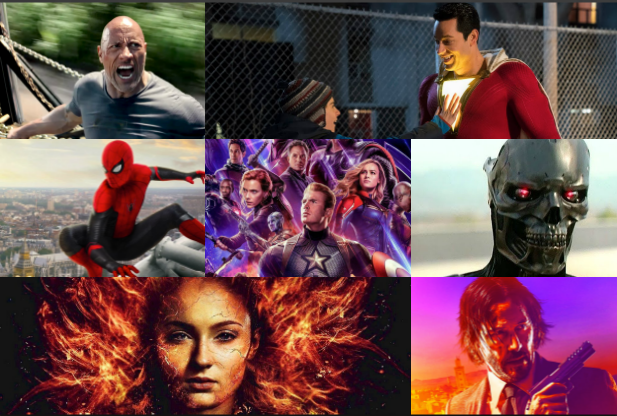
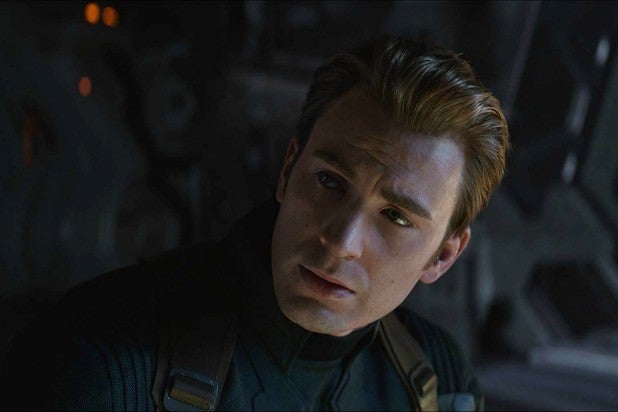
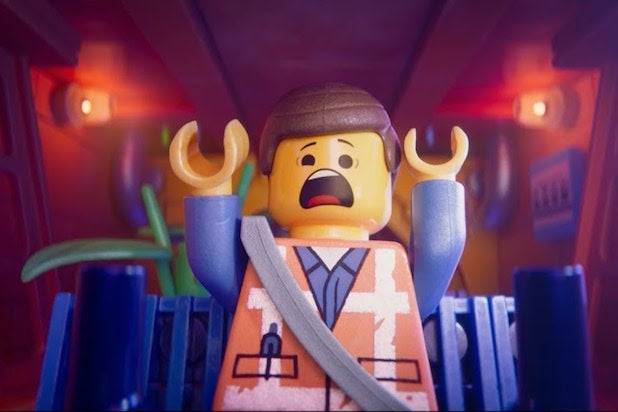
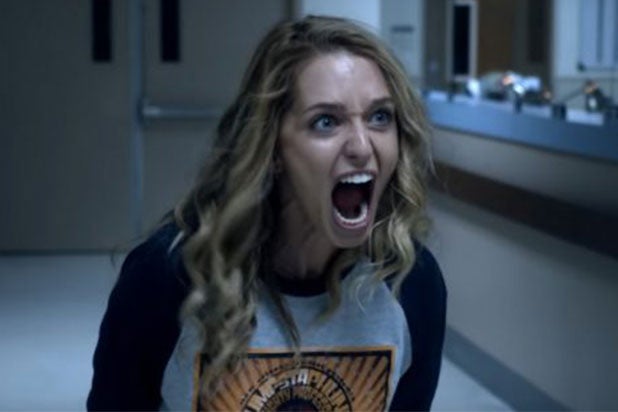
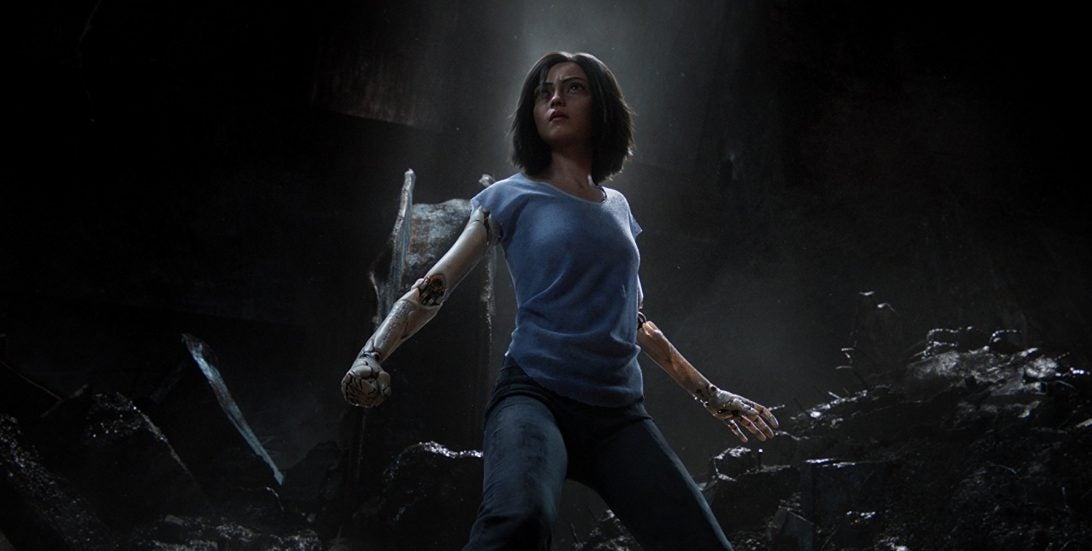
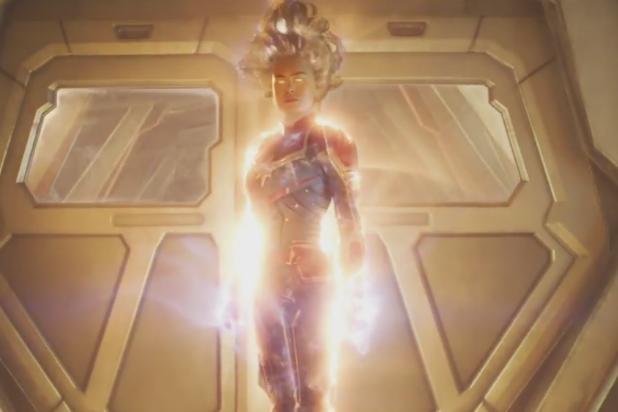
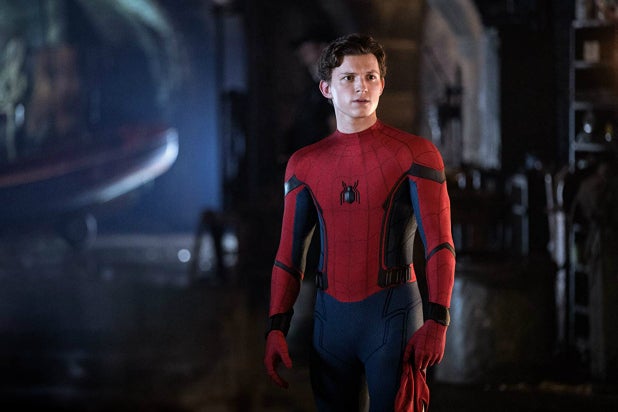
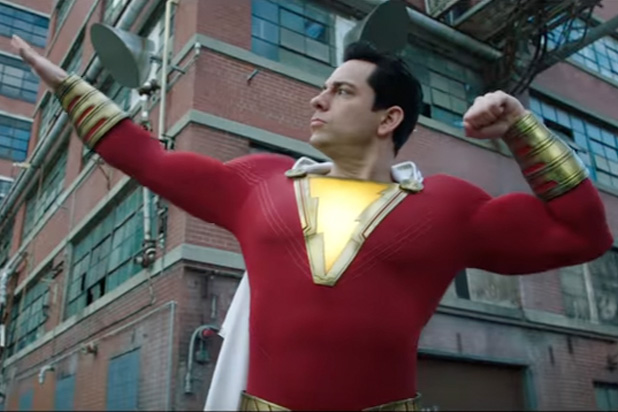
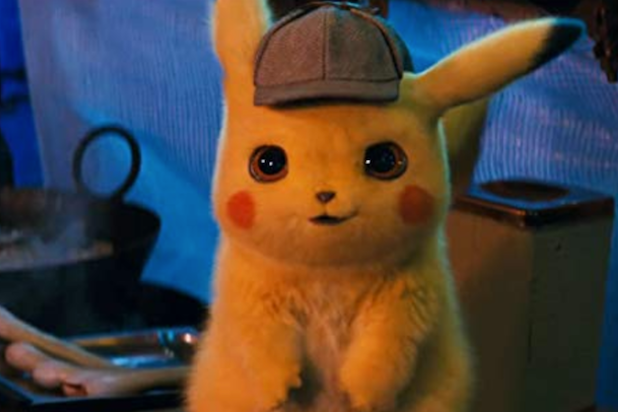
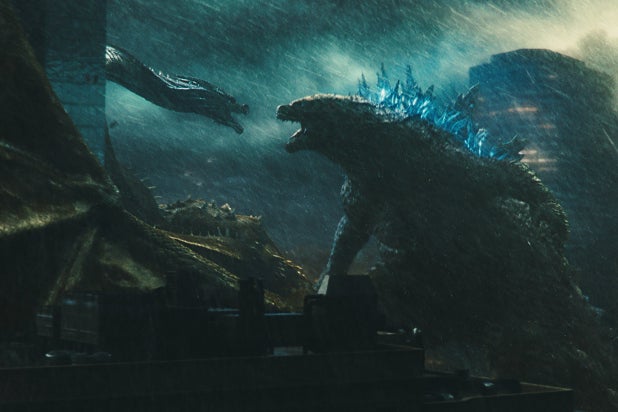
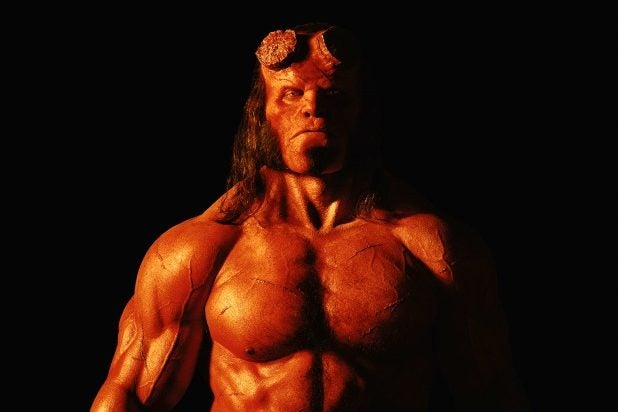
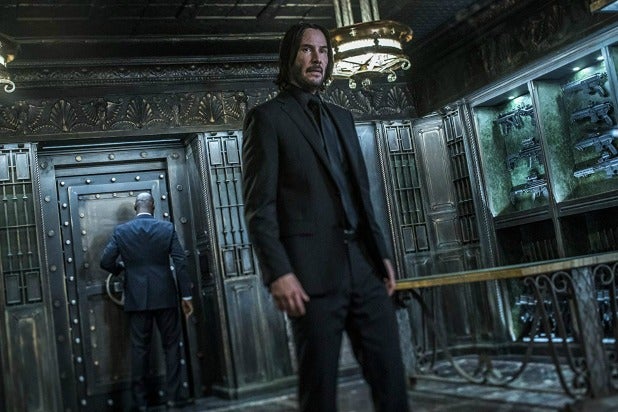
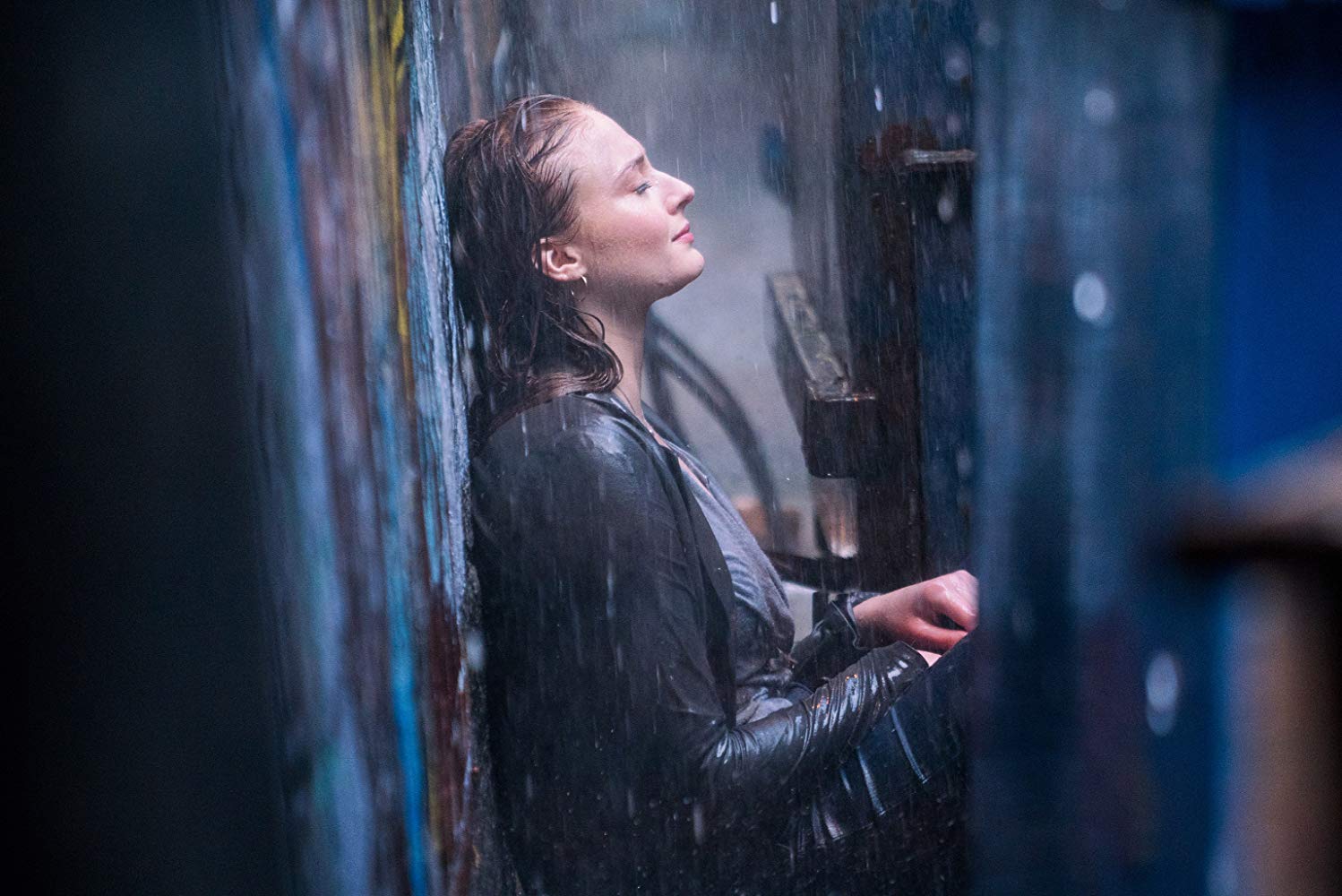
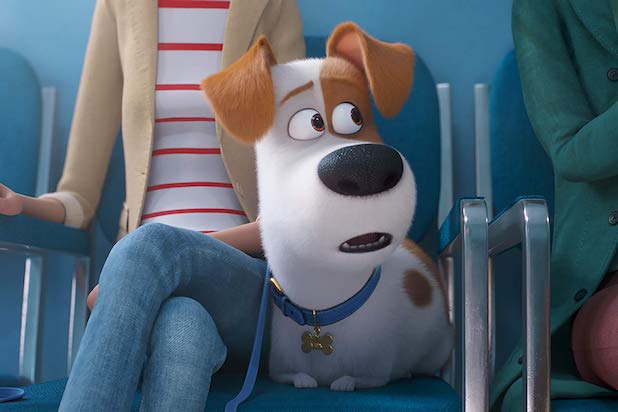
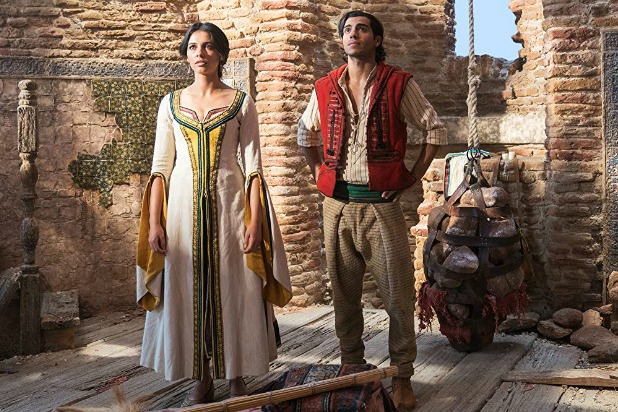
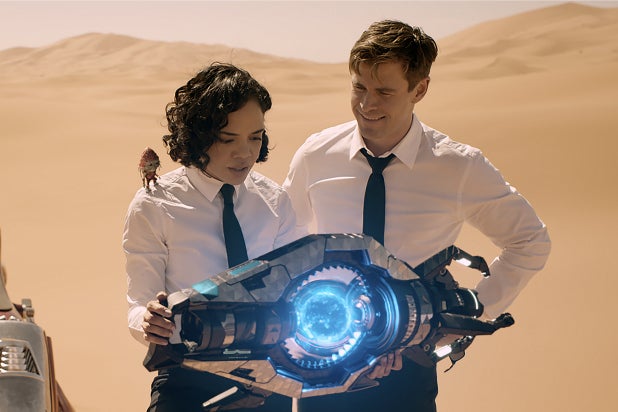

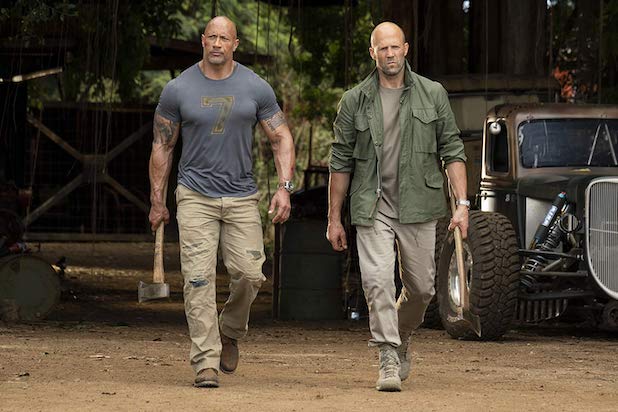
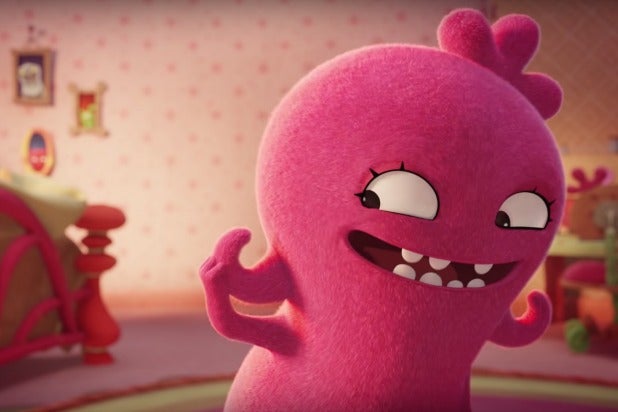
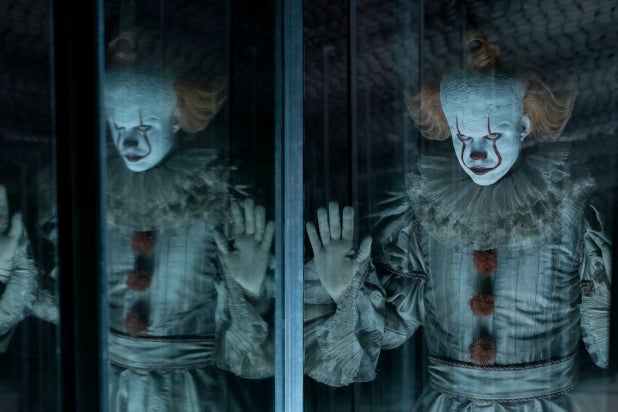
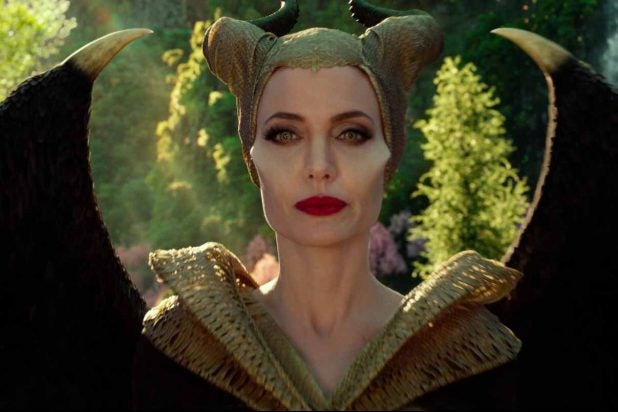

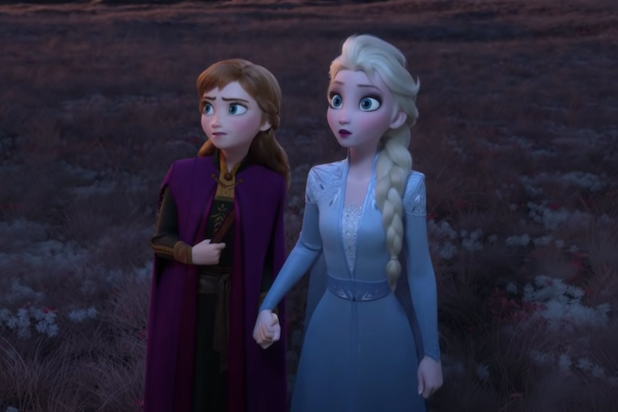
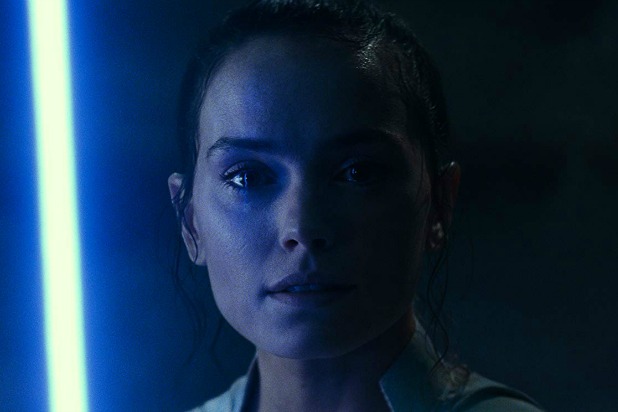




0 Yorumlar